The Obon Festival of Japan
Each year, families across Japan welcome home the spirits of their ancestors during the three-day festival of Obon. It is most widely observed in mid-August, although the timing and type of celebrations vary by region and local customs.
Some areas in northeastern Honshu follow the lunar calendar’s date for this holiday and hold their Obon festivals in July. Some areas of southwestern Honshu, Shikoku Island, and Okinawa celebrate Obon in September.
Obon’s origin
The Obon festival traces its origin to Buddha’s disciple, Mokuren, whose mother had fallen into the world of the hungry ghosts, an unpleasant realm in the afterlife. His heart ached to imagine her suffering.
In answer to his appeal for help, the Buddha instructed him to make an offering to his fellow disciple monks of a wide variety of food, and not only his mother, but also the last seven generations of his ancestors would be saved.
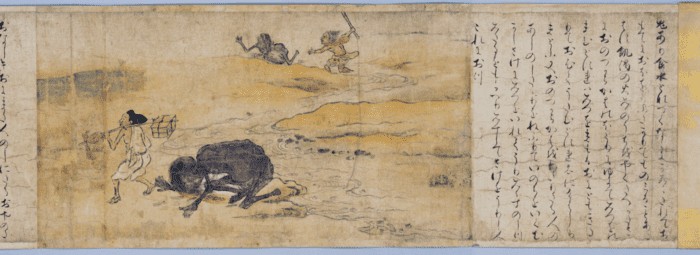
Mokuren obeyed the Buddha, placing his offerings of food on a tray, or obon, which is said to give the festival its name. He then danced a dance of joy, filled with a mix of newfound gratitude toward his mother, and the joy of knowing that she and his other ancestors had been released.
So Mokuren gave us three important Obon traditions:
- Offerings
- Gratitude towards mother
- Dance of joy
Now we’ll see how these have developed into today’s Obon festivities.
Welcome home, Spirits!
Families return to their ancestral homes to welcome the spirits of their departed ancestors on August 13th. Many people go to their family’s graves to accompany the spirits back to their houses, some lighting fires to guide the way. At the threshold of the house, water is set out for the spirits to wash their feet before entering.
Inside the house, a shelf is constructed with a frame of bamboo or chestnut, laid with a board. This is called a Bon-Dana, and it will hold offerings to the ancestors’ spirits. Traditionally, a rush mat is placed on the shelf, upon which are placed flowers, incense, rice dumplings, noodles, vegetables, fruit, and most importantly, water. Front and center is placed a mortuary tablet —a stone tablet inscribed with the names of the family’s deceased—like a place-marker at a banquet. Behind all this is hung a decorative scroll.
The recently deceased are honored with elaborate bamboo and cedar leaf decorations placed in the front yard or under the eaves of the house. They have not yet joined the collective ancestral spirit of their family, or Sorei. After 33 or 50 years, depending on the tradition, they will finally lose their individuality and merge with the Sorei.
Each family’s Sorei visits them four times a year, at Obon, at New Year’s, and at the spring and fall equinoxes.
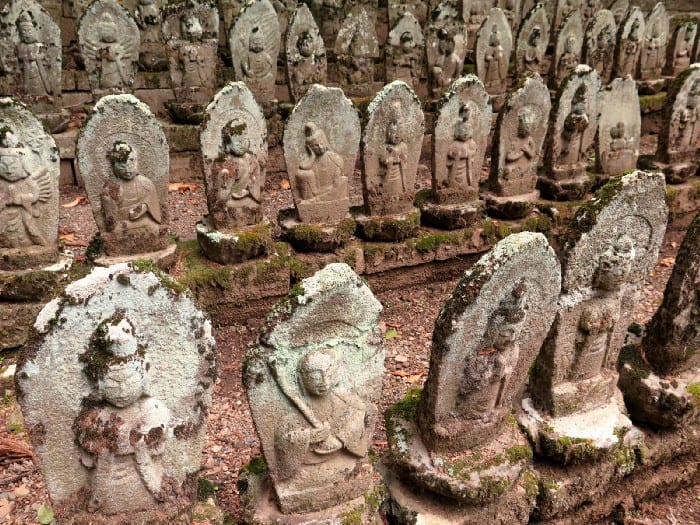
But what of Homeless Spirits?
Muenbotoke are spirits of those who have died an unnatural death, at sea, along the road, or those who have no family to look after their graves. If left to themselves, it is believed that they will bring harm, so these spirits, too, are honored at Obon.
Although these strangers have no place on the family’s Bon-Dana, people may build a simple shelf and lay out food, such as eggplants and cucumbers wrapped in leaves, for the Muenbotoke. Others may lay big taro leaves upon the floor beneath the family’s Bon-Dana, upon which offerings of food are placed.
Gratitude to the living
Obon is not just about the dead. Elderly parents are given gifts of special food and drink in a show of appreciation and filial affection.
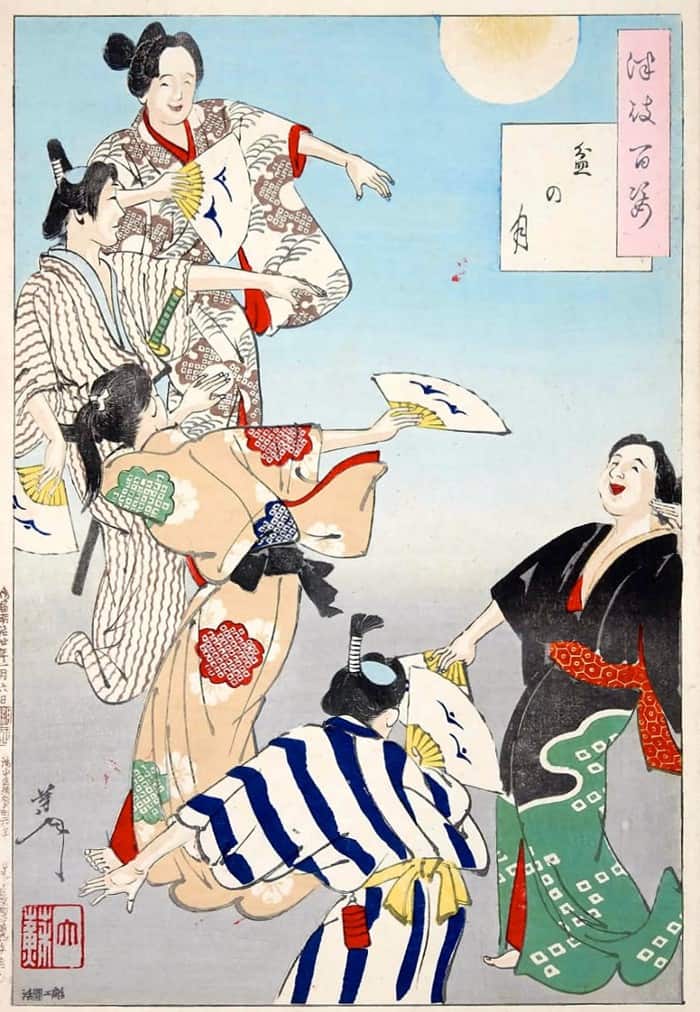
Dancing
Hearkening back to Mokuren’s dance of joy, Bon-Odori are dances held during the Obon holidays. People dress in colorful summer yukatas and dance a synchronized dance through the streets or in circles around a raised platform at shrines. Besides sending the spirits on their way to the realm of the dead with gratitude and joy, the dances also serve as prayers to ward off potential haunting or curses.
Until we meet again
On the night of August 16th, many families walk to their family graves to send their ancestors back to the spirit world. But there are other customs.
Perhaps because people in days past felt the world of the dead was across the sea, or above the sky, various traditions developed. Some people wrap offerings in lotus leaves or reeds and send their ancestors off in these makeshift boats down the river. Others form boats from straw and release their ancestors’ spirits into the sea, while others place paper lanterns on the water for their ancestors’ spirits to ride back to the spirit realm.
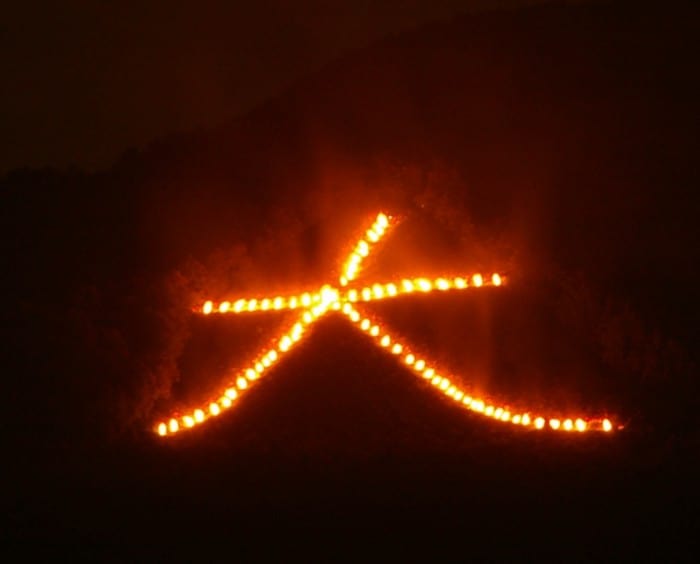
Most famously, the Kyoto Gozan no Okuribi is held to send the spirits off to the heavens. Five great fires are lit on five mountains surrounding Kyoto City, one by one starting at 8pm on August 16th, each forming a different Japanese character.
In some sections of the country, people prepare Shōryō-uma, horses and cows made from cucumbers and eggplants, for the spirits to ride back into the realm of the dead.
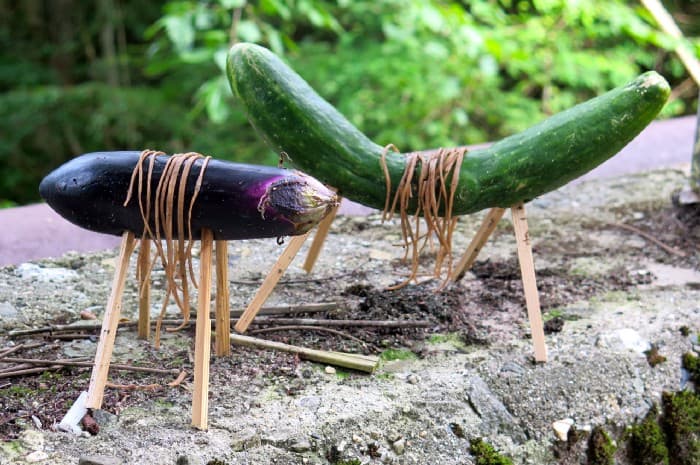
There the spirits will continue learning and growing until their next, not so widely celebrated, visit during the autumn equinox.
All photos ©Diane Tincher, unless otherwise noted.
Sources:
図説民俗探訪事典 compiled by 大島 雄, kotobank.jp, http://www.shingon.org/, and many more Japanese webpages.
If you have questions about Japan or suggestions for articles, please add them in the comments. For more photos and information on Japan, follow me on instagram at: https://www.instagram.com/more_than_tokyo/




